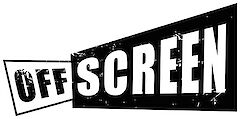Out Loud! Film
We welcome bodybuilding, monokini & aerobics, MTV, video cassettes, home computers, compact discs, hiphop, rap, scratch, breakdance & graffiti, afrobeat, postpunk & gothic rock, new wave, synthpop and the Brittish new romantic scene. And welcome you, spectator, for a splendid night!
LIVING IN A MATERIAL WORLD: THE ‘80S
The ‘80s are known as an era of superficial excess, unbridled consumerism and neoliberalism. A time when the western world was split into either workshy losers or successful yuppies. Some donned tracksuits, while others wore Don Johnson jackets with shoulder pads and rolled-up sleeves. The body culture reigned supreme: bodybuilding, jogging (preferably with Sony Walkman), monokini and aerobics (in the most colourful leggings, sweatbands and legwarmers). The quilted Millet jackets separated the haves from the have-nots. It appears that the ‘80s were both the climax and anti-climax of the cold war, juxtaposing nuclear missiles demonstrations with glasnost, and perestroika with the fall of the Berlin Wall.
The morbid punk anarchism of the streets and the riotous disco escapism of the dance floor – which marked the end of the ‘70s – died a death in the early ‘80s. They were dragged along into an increasingly global and diverse popular culture that was epitomised by MTV (24/7), the video clip channel that flourished on the back of the big three of ‘80s pop music: Michael Jackson, Madonna and Prince. Or was it the other way round?
New technologies like video cassettes, home computers, compact discs and Atari video games made their way into people’s private lives. They changed the way culture was enjoyed by the X Generation, the lost generation who experienced economic decline after the second oil crisis. Electronics was everywhere. Subcultures were rampant. Hip-hop, the Afro-American music from the New York Bronx, blared through the considerably oversized boom boxes or ghetto blasters. While rapping, scratching, breakdance and graffiti gave a voice to metropolitan frustration, they were quickly hijacked for commercial gain.
Disco did not survive the hype. Funk continued to find its way to the charts, sampling elements from electronic music and hip-hop. Funk emigrated from the United States to Africa, where it developed its own distinct style, like in Fela Kuti’s Afro beat. The black continent was re-discovered by western musicians. Initiatives like Band Aid, Live Aid, USA for Africa or United Artists Against Apartheid showed the pop stars’ philanthropic side, boosting the sales figures of their own records in the process. The ‘80s: a decade with two faces.
Punk rock evolved into the more complex and introverted post-punk and gothic rock of groups like Joy Division, The Cure and The Talking Heads. This latter group also represented new wave, a movement with roots in punk, industrial, underground and electronic music. The music that relied heavily on the synthesizer and the steady beat of the drum computer of new wave acts such as Gary Numan, Eurythmics, Depeche Mode, OMD and New Order is also referred to as synthpop. A particular niche was the British new romantic scene with more pop-oriented bands such as Duran Duran, Human League, ABC, Spandau Ballet and Culture Club, who recycled the make-up and eccentric, flamboyant dress style of glam rock and elevated both the video clip and ‘teen idol-marketing’ to a separate art form. Most of the fashion victims, however, hid behind the bombastic arena rock or heavy metal of Def Leppard, Van Halen, Mötley Crüe, Poison, Bon Jovi or Europe. Long live black-leather-clad band members with teased hairstyles and spandex T-shirts. Who said the ‘80s were wrong?
Finally, the use of synthesizers and beats by the new wave influenced the development of house in Chicago, techno in Detroit or new beat in Belgium, while the punk legacy of indie spirit would prove crucial for the development of alternative rock and grunge in the late ‘80s, but that is for next year.
In cooperation with Offscreen









